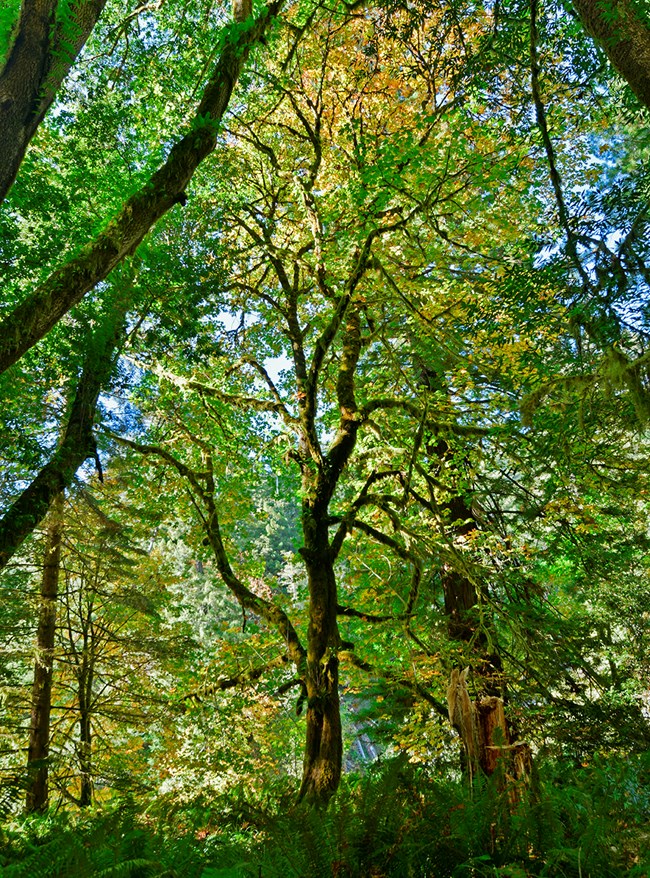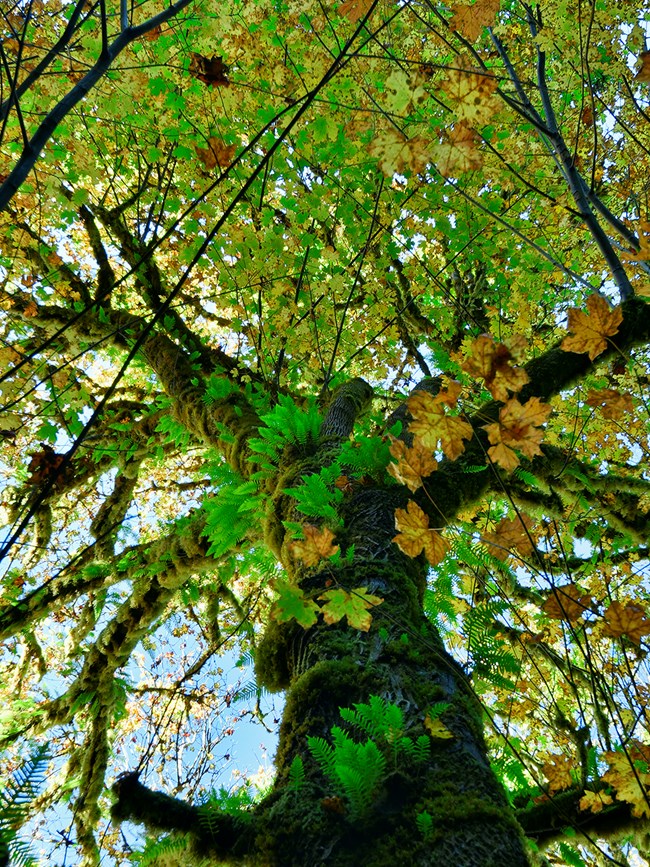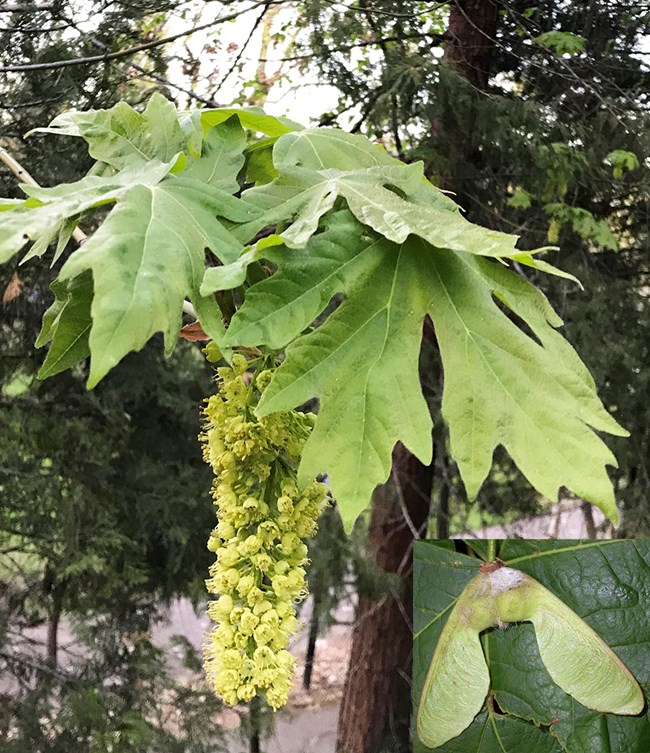Last updated: May 20, 2025
Article
Bigleaf Maple

NPS/John Chao
General Description
The bigleaf maple (Acer macrophyllum), also known as the Oregon maple, is a deciduous, long-lived tree native to the Pacific Northwest. True to its name, it dangles unusually large, 5-lobed, palmate (palm-shaped) leaves from its branches. These goliath photosynthesizers measure up to 30 cm (12 in) wide and almost as long, a singular feature that distinguishes the bigleaf maple from others in the soapberry family, Sapindaceae (though some still place it in Aceraceae). Its leaves and branches grow in an opposite formation, and spread into a domed canopy at maturity. The young bark is smooth and grayish-brown, eventually becoming red-brown and deeply fissured with age.
Giant leaves are not its only distinctive feature. The bigleaf maple is the tallest maple in North America, reaching over 30 m (100 ft) in some areas. And it stands out in a crowd when it comes to decor. In a streamside mix of hardwood and conifer trees, a mature bigleaf maple will be the one most likely draped in mosses, lichens, and ferns.
Habitat and Distribution
Bigleaf maple grows in low to mid elevations in coastal ranges from Alaska through California, and largely west of the Cascade and Sierra Nevada crests. It grows largest in the moist soils of river bottoms and at the base of foothills, but tolerates dry sites as well.

NPS/John Chao
Ecology
Bigleaf maples nourish a variety of animals and other plants. Deer and elk browse its leaves, new twigs, and seedlings. Squirrels, chipmunks, and some birds, like the evening grosbeak (Coccothraustes vespertinus), eat its seeds. One remarkable feature of this tree is the variety and quantity of other plants that grow on its trunk and branches in moist climates. Known as epiphytes, these mosses, lichens, and ferns are not parasites of the tree, but rather survive by their own means simply using the tree as a substrate. Their decay builds “canopy soil” in the deep bark furrows or crotches of the tree, which in turn provides moisture and nutrients for other species, including invertebrates. The organic matter that falls from these mats of canopy soil, called epiphytic litterfall, enriches the ground with carbon, nitrogen and other nutrients.

NPS Sonya Daw; inset photo Gerald D. Carr
Reproduction
Reproduction begins at about 10 years for bigleaf maples. A cluster of pendent yellowish-green flowers (raceme) emerges in April–May just as the new leaves are popping open. One tree contains both male and female flowers, making it monoecious, which means “single house.” Insects pollinate the flowers in the next few weeks, which eventually produce large, brownish, double-winged seeds (samaras). The wings on the seeds are large, up to 5 cm (2 in) long, and shaped in an upside-down V. These seeds “helicopter” down on windy days in the late fall.
Fun Facts
- Pacific Northwest tribes have used bigleaf maple for medicinal purposes, for making wooden canoe paddles, and more.
- Like some other maples, bigleaf maple produces sap that can be boiled down to a mineral-rich and delicious maple syrup.
- The bigleaf maple can produce tiny canopy roots that grow into epiphyte-derived canopy soil to help nourish the tree itself.
- Its fine-grained, pale brown wood is commercially valuable for making musical instruments and furniture veneer.
Where to See
Bigleaf maple occurs in Whiskeytown NRA, Redwood N&SP, Oregon Caves NM&P, and Crater Lake NP.
Learn More
https://www.pugetsound.edu/academics/academic-resources/slater-museum/exhibits/terrestrial-panel/bigleaf-maple/
https://plants.sc.egov.usda.gov/plantguide/pdf/pg_acma3.pdf
http://naeb.brit.org/uses/search/?string=bigleaf+maple
Download a pdf of this article.
Prepared by Sonya Daw
NPS Klamath Inventory & Monitoring Network
Southern Oregon University
1250 Siskiyou Blvd
Ashland, OR 97520
Featured Creature Edition: April 2021
